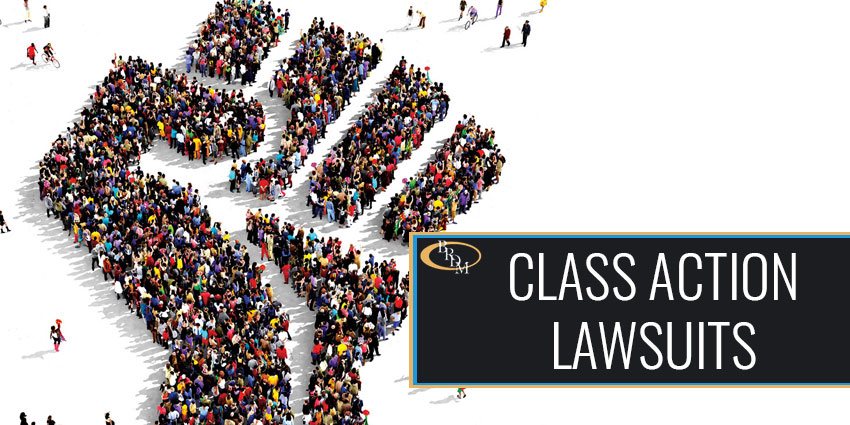Justice for All: The Role of Class Action Lawsuits in Protecting Consumers
Wiki Article
Trick Variables to Consider in Course Action Claims: Insights for Legal Representatives
Course activity legal actions can be complicated and tough for legal representatives to navigate. Recognizing these factors and their effects is important for legal representatives aiming to successfully represent their customers in course activity suits.Course Certification Requirements
To proceed with a course action lawsuit, legal representatives need to navigate via a series of stringent course accreditation needs. Course certification is a crucial phase in the litigation procedure that identifies whether a team of plaintiffs can be licensed as a class and continue with their claims jointly. These requirements offer to guarantee that course actions are reliable and suitable devices for solving disputes including numerous complainants.While there is no set numerical threshold, courts usually consider a class with even more than 40 participants as completely numerous. Additionally, commonality is one more crucial factor in class certification.
Moreover, typicality and competence of depiction are critical factors to consider. Typicality ensures that the claims or defenses of the representative events are typical of the class. Competence of depiction ensures that the representatives will fairly and sufficiently secure the rate of interests of the course members. A class activity have to additionally please the demand of supremacy, implying that a class activity is a premium approach for adjudicating the dispute contrasted to various other offered techniques.
Browsing with these course certification requirements can be complex and difficult for attorneys. Understanding and conference these requirements are vital to successfully go after a course action claim on part of a group of complainants.

Commonness of Cases
The next crucial variable to take into consideration in the class certification procedure is the commonality of cases among the plaintiffs. Commonness refers to whether the course members share comparable legal issues and inquiries of truth that can be dealt with jointly. In other words, it is necessary to figure out if there are typical inquiries of legislation or fact that are central to the lawsuits and that predominate over any kind of private concerns.To establish commonness, the plaintiffs need to show that there are accurate or lawful issues that prevail to the whole class. This can be attained by identifying a typical training course of conduct or a common lawful concept that underlies the insurance claims (Class action lawsuit). The visibility of common concerns is necessary since it advertises judicial performance and economic climate by permitting a single decision to solve the issues for the entire course
Nonetheless, it is very important to keep in mind that the commonness requirement does not require that all the specific claims equal. Distinctions in problems or individual scenarios do not always beat commonality if there are still usual questions that bind the class together.

Damages Estimations
When determining problems in course activity lawsuits is the accurate evaluation of monetary losses sustained by the course participants,One essential element to take into consideration. In order to establish the appropriate amount of payment, it is needed to review the level of harm suffered by each individual within the class. This can be a complex task, as it needs a detailed evaluation of numerous variables, such as the nature and period of the injury, the economic influence on the impacted individuals, and any kind of other relevant considerations.When analyzing economic losses, it is necessary to consider both the indirect and direct damages experienced by the course participants. Direct damages refer to the real out-of-pocket expenditures sustained as a result of the defendant's actions. These might consist of medical bills, home damage costs, or any kind of various Recommended Reading other concrete monetary losses. On the other hand, indirect problems include the intangible losses that are harder to evaluate, such as psychological distress, loss of credibility, or diminished lifestyle.
To calculate problems accurately, lawyers have to gather detailed evidence, consisting of monetary documents, expert viewpoints, and testimonies from the class participants. They may likewise require to engage financial and economic specialists who can give insights into the lasting financial ramifications of the injury suffered.
Settlement Arrangements
During settlement arrangements, lawyers must engage in cautious and critical conversations to get to an equally agreeable resolution for all celebrations involved in the class action legal action (Class action lawsuit). Settlement arrangements are an important stage in the litigation process, where the celebrations try to get to a concession without mosting likely to test. These arrangements call for lawyers to utilize their look at this web-site negotiation abilities, lawful expertise, and understanding of the situation's weak points and staminasOne crucial factor to consider during negotiation negotiations is the potential risks and costs connected with proceeding to trial. Attorneys should thoroughly examine the probability of success at test and evaluate it against the potential benefits of a settlement. They should additionally take into consideration the possible time and sources that would certainly be needed to undergo a trial, as well as the potential adverse attention that can result from a public trial.
Another vital variable is the passions and worries of the course members. Attorneys require to comprehend what the class members wish to attain with the suit and how a negotiation can address their grievances. By taking into consideration the course members' perspectives and seeking advice from them throughout the settlement process, lawyers can much better advocate for their interests and make sure that any kind of settlement reached is acceptable and fair.
Additionally, attorneys have to be prepared to negotiate with the opposing event and their legal reps. This calls for a deep understanding of the staminas and weaknesses of both sides' disagreements and a readiness to jeopardize. Proficient negotiators can leverage this expertise to find typical ground and craft innovative options that fulfill the demands of all parties involved.
Effective Customer Depiction
To properly represent their clients in class activity claims, legal representatives have to have a comprehensive understanding of the instance and faithfully supporter for their clients' interests. Reliable client representation calls for lawyers to develop open lines of communication and keep a solid attorney-client relationship throughout the whole litigation procedure.
First and leading, attorneys have to extensively analyze the realities, lawful concerns, and prospective risks associated with the situation. This includes carrying out a thorough examination, evaluating pertinent documents, and consulting with specialists if necessary. By getting a deep understanding of the case, legal representatives can develop a critical strategy tailored to their customers' requirements and goals.
Additionally, lawyers need to proactively advocate for their customers' rate of interests throughout all stages of the claim. This involves drafting persuasive lawful arguments, conducting comprehensive research study, and providing engaging evidence to support their clients' claims. Lawyers ought to additionally stay educated regarding current developments in course action law and use this understanding to strengthen their customers' positions.
Along with legal campaigning for, effective customer representation entails giving routine updates, addressing concerns, and addressing any concerns that customers may have. Attorneys ought to be proactive in keeping their customers informed about the progress of the situation and any kind of substantial growths that may influence the end result.
Inevitably, reliable client representation calls for lawyers to be attentive, responsive, and dedicated to securing their clients' legal rights and rate of interests. By embracing a client-centered method, attorneys can make best use of the opportunities of achieving a positive outcome in course activity suits.
Conclusion
Finally, legal representatives associated with class action suits ought to take into consideration crucial elements such as class qualification requirements, the commonness of claims, damages estimations, negotiation arrangements, and reliable client depiction. By thoroughly dealing with these elements, lawyers can boost their possibilities of success in class action claims and make sure that the interests of their click here now customers are protected.
Recognizing these aspects and their effects is essential for legal representatives intending to properly represent their customers in class action legal actions.To proceed with a class action claim, attorneys need to browse via a series of strict course accreditation needs. Course qualification is a vital phase in the lawsuits process that identifies whether a group of plaintiffs can be accredited as a class and proceed with their cases collectively. A class activity should additionally satisfy the requirement of superiority, indicating that a course action is an exceptional approach for settling the disagreement contrasted to various other readily available methods.
One essential facet to consider when determining problems in course action legal actions is the accurate evaluation of monetary losses incurred by the class participants.
Report this wiki page